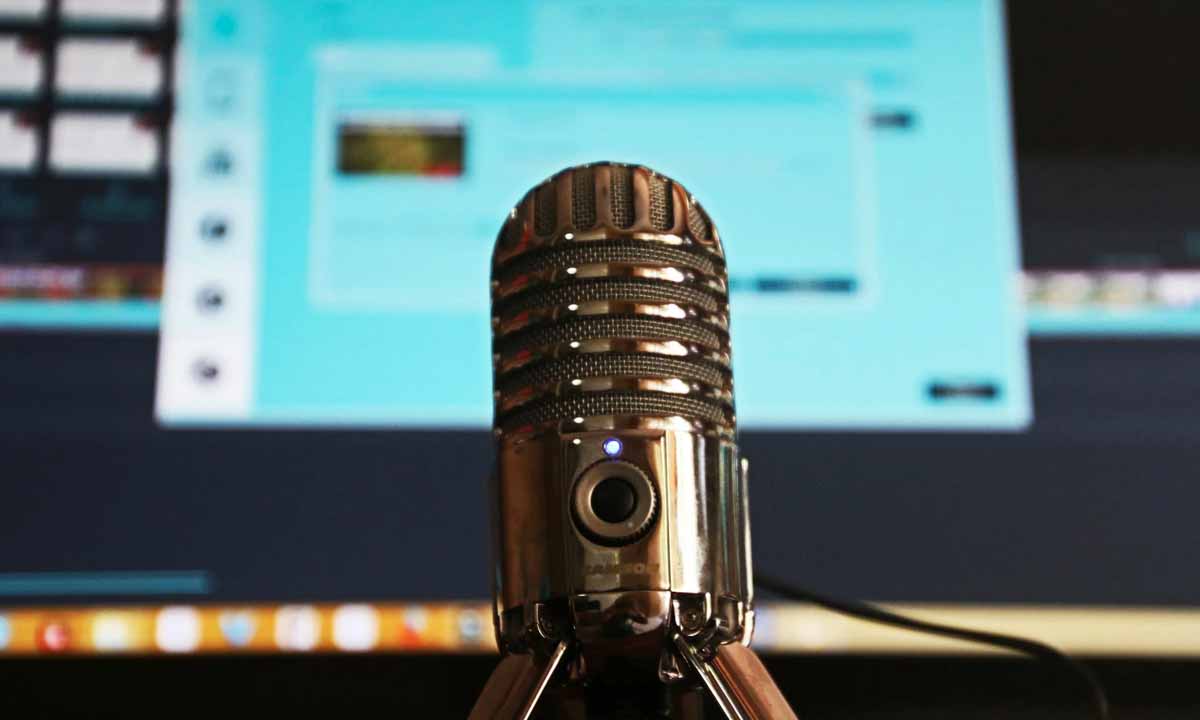Digital
Creating Educational Content for Podcasts

The podcast sector continues to gain traction.
Studies show that a staggering 42% of American adults had engaged with a podcast in the last month of 2023, which has increased more than threefold over the past ten years. The trend is continuing to grow as the number of monthly listeners rises.
The world of podcasts is growing rapidly and becoming increasingly popular globally. Despite the expectation of over 500 million listeners by 2024, only 3.2 million podcasts are currently available.
To provide a brief comparison, over 600 million blogs worldwide indicate that the podcasting industry, valued at billions of dollars, still has plenty of room for growth.
Why Start Podcasting?
There are multiple reasons if you are still questioning why you should hurry to occupy this large (yet still available) market.
To begin with, podcasting is a great way to connect with and impact others. Many listeners listen to podcasts while on the move, allowing the content to become a part of their daily activities and fostering a stronger bond of trust and familiarity with the hosts. Therefore, podcasting is a viable option if you want to build a personal brand, define your voice, and cultivate a devoted and trusting audience.
Additionally, for students aspiring to stand out in the college admissions process, seeking assistance from specialized college application essay writers can provide invaluable support in crafting compelling and memorable personal statements.
Furthermore, as the podcasting industry is projected to reach $4 billion by 2024, many companies acknowledge it as a crucial platform for marketing and revenue-generating strategies.
To conclude, podcasting is a valuable tool that can benefit individuals and businesses in many ways. Most importantly, starting a podcast is not as difficult as it may seem.
What is the importance of prioritizing the development of educational material?
If you decide to enter the podcasting industry, you may wonder which field to focus on. While there are many possibilities, we believe educational content is the way forward.
Studies show that most podcast listeners, up to 74%, seek to acquire new knowledge, while only 26% are tuning in for entertainment, relaxation, or inspiration.
This single point demonstrates the immense impact of educational podcasting. If this has caught your attention, you are in the right place! Keep reading, and we will help you understand how to produce educational content for podcasts.
Step 1: Pre-Production
To begin, it is essential to have a detailed strategy. It would help if you considered numerous factors and thoroughly planned during the pre-production phase to produce a captivating podcast that will assist you in reaching your objectives and providing genuine value to your audience.
Define Your Goal
To create top-notch content and stay motivated when podcasting, having a specific objective in sight is essential.
There are several potential motives for wanting to begin podcasting.
- To build a personal brand;
- To promote your products or services;
- To build your authority in the field;
- To communicate and exchange thoughts, information, and expertise.
Identify your goals in the beginning so they can guide the process.
Pick a Perfect Topic
Afterward, it is important to select a particular subject for your podcast. This is a crucial step that requires careful consideration, as the chosen topic can determine the success or failure of the entire podcasting endeavor.
The key to a great topic is as follows:
Your strong interest in the subject, expertise, and ability to provide valuable information can attract an audience and potentially lead to financial opportunities.
Find a topic that incorporates all these factors to start a podcast and expand your listenership successfully.
Expert advice: Instead of just coming up with ideas on your own, don’t hesitate to take inspiration from other successful shows. Please listen to popular educational podcasts to understand their content and audience engagement strategies. This will help you identify a specific niche you can build on. However, you must have a true passion for the topic you choose.
Understand Your Audience
After deciding on a basic theme for your podcast, it is important to conduct audience research to determine their interest. This is the key to attracting the right audience and developing a dedicated following.
To make well-informed decisions about your content, it is crucial to identify and understand your target audience or ideal listener.
- Who they are;
- How old they are;
- Where they are located;
- What are their primary pain point;
- What interests them, etc.
The better you understand your potential audience through gathering information, the more effectively you can tailor your message to them.
Decide the format and length of your content
After determining your target audience, it will be important to determine the educational content that will most appeal to them.
If you focus on college students as your target audience, they may be interested in various aspects of studying effectively. This can range from longer lectures on academic subjects to short podcasts explaining specific concepts and how-to podcasts such as “How to do thorough research for an essay” and reviews on student-related services like “Which are the best paper writing services.” Understanding your audience’s interests can help you determine the type of content to create, so it is important to plan carefully.
Afterward, it would help if you determined the ideal length for your episodes. Here is a summary to assist you in making that decision:
- Mini podcasts, ranging from 5 to 10 minutes, are ideal for providing concise educational content like definitions, information, or explanations of concepts.
- Podcasts that are 20-40 minutes long are ideal for audio classes, lectures, short interviews with experts, and educational programs.
- Long podcasts that are over 60 minutes in length are ideal for deep interviews or academic discussions.
Choose a title and brief overview for your podcast
Lastly, in the final step of your pre-production process, choosing a suitable name for your podcast and crafting an engaging description is important.
A perfect name must be:
- Concise;
- Simple;
- Intriguing;
- Catchy.
Feel free to be imaginative when naming your podcast to attract attention and leave a lasting impression. Take the time to research and look at the names of other podcasts in your field for ideas. Here are some examples of popular educational podcast names to spark inspiration.
- Teach Me, Teacher
- Stuff You Should Know
- Wow, in the World
- Science Friday
After obtaining the name, create a summary explaining the content of your episodes and persuading listeners to tune in. Remember to include a call to action to attract more listeners.
Help potential listeners find your podcast more easily by researching relevant keywords for your topic and incorporating them into the name and description of your podcast. This can improve your search rankings.
Step 2: Creating Educational Content
After completing all the necessary pre-production tasks, you can move on to the thrilling part of preparing your initial episode.
Pick a Specific Topic
To begin, it is important to choose a focused subject for your podcast episode that aligns with the overall theme of your podcast. It is best to select a specific topic for the entire season and divide it into the desired number of episodes.
Write a Script
Once you have organized your talking points, create a script for your episode. The great thing is that you don’t necessarily need to be a professional educational writer to complete this step independently.
Here are the tips that should help:
- Carefully plan out the organization and format of your show;
- Conduct a comprehensive investigation of the topic to gather evidence and information that supports it.
- Outline;
- Create a captivating introduction that introduces yourself effectively and entices the listeners to stay engaged.
- Make your script conversational;
- Include delivery notes in your script to indicate when to pause, emphasize certain parts, or include additional elements in your recording.
- Feel encouraged to include prompts for action to maintain the interest of your audience and accomplish your goals.
Expert advice: Make sure you don’t forget to rehearse reading your script several times before you begin recording.
In the image provided, a woman in a black tank top is seen sitting on a couch and using a MacBook.
Step 3: Record
Once the script is completed, you can begin recording your inaugural episode.
Initially, having the necessary technology to create high-quality recordings for your podcasts is important. Furthermore, you should establish a designated, quiet space that is free of distractions and has suitable acoustics for optimal sound quality.
Moreover, it is necessary to establish your microphone correctly and familiarize yourself with optimal recording methods to prevent any unpleasant noises in your recordings.
Once you’re prepared, begin recording according to your script. It’s crucial to remember that educational content creators don’t have to be overly serious or dull in their podcasts to maintain their audience’s interest.
Incorporate dramatic pauses, humor, laughter, and other conversational elements to keep your episodes engaging. Don’t be afraid to improvise and add personal touches to your recordings, straying from the script when necessary to enhance the content.
And most importantly, be yourself!
The Bottom Line
After completing the recording of your content, the process is not finished. You still need to edit the recording, create engaging artwork for your podcast, and prepare show notes and multimedia resources to improve the overall impact of your podcast.
Finally, you will also have to raise awareness about your podcast and try to attract your audience. Keep following bCast for more advice on navigating the various stages of developing your podcast. Best of luck with your debut episode!
Digital
Best Usenet Newsgroups for Entertainment and Celebrities

Staying abreast of all the news in the world of entertainment is a favorite pastime for many. Afterall, something is always going on. One good way to stay informed and up-to-date would be by joining Usenet newsgroups related to these topics. Though it sounds a bit old-fashioned, Usenet turns out to be a real treasure trove of information and discussion about everything entertaining, from the latest releases of movies and TV series to fresh gossip over celebrities and fan theories.
There is lively newsgroup action that lets you dig much deeper into whatever interests you most. Besides, it also lets you share resources and connect with folks who share your passions. Let’s see how you might employ Usenet to keep up with entertainment and celebrity news.
What is Usenet?
It is to modern-day Internet forums and social networking like what a grandparent is to a 60-year-old- still very much in the game but has an older, rougher past. It is a massive network of discussion boards where users worldwide post information, ask questions, and talk about virtually anything. Think of it as a huge bulletin board system where users post messages to groups, called newsgroups, dedicated to specific subjects. While you can get it with any Usenet service provider, we recommend using a Usenet service that provides SSL encryption to secure your activity.
Usenet dates back to the early ’80s, making it one of the oldest forms of online communication. Despite being very old, it is a platform still in use today, especially by niche communities like entertainment. For decades, fans have swarmed Usenet newsgroups discussing the latest movies and TV shows, music, and celebrity gossip. This place is full of in-depth discussions, rare resources, and a community of people sharing your interests. Whether you want to keep up to date with your favorite celebrities or find extensive discussions about fan theories, Usenet is a great place to start.
Top Usenet Newsgroups for Entertainment and Celebrities
Usenet features myriads of groups that center on entertainment and celebrity fandom. These are the forums where individuals can talk to one another, relay the news, and discuss their views about movies, TV shows, music, or celebrities. Here are the best entertainment-related newsgroups to check out:
alt.tv.reality
Here, members discuss anything related to reality TV. Topics range from competitive shows to lifestyle and documentaries. They discuss episodes, competitors as well as rumors, which are exciting for any reality television fan.
rec.arts.movies.current-films
This is a meeting place for movie fanatics. It involves discussions of current films in the movie theater up to and including reviews, coverage, and performance at the box office, among other industry-related news. It’s a place to share recommendations and critique movies, plus stay up-to-date on what’s going on in the world of cinema.
alt.gossip.celebrities
If you’re interested in celebrity culture and the gossip surrounding it, this is the newsgroup for you. There are threads on everything from news about celebrities, scandals, rumors, as well as what the paparazzi have to say.
alt.fan.harry-potter
Harry Potter fans unite in this newsgroup to discuss anything to do with J.K. Rowling world of wizardry. Discussions range from books, movies, characters, fan fiction, and theories coming under the purview of this much-loved franchise. The actors playing those very beloved characters are also often a topic for discussion, amongst them: Danielle Radcliffe, Rupert Grint, Emma Watson, Bonnie Wright, Tom Felton, Jason Isaacs, etc.
rec.arts.tv.interactive
Interactive discussions among television enthusiasts are the order here. Hot topics include shows, characters, plot details, and how fans think things will go. In other words, a place where viewers go over episodes with a fine-toothed comb, make predictions of upcoming events.
These Usenet newsgroups are the virtual meeting ground through which fans can get together, argue, and celebrate their collective interests in entertainment and celebrities. Joining these newsgroups is your ticket to rubbing shoulders with millions of like-minded people who share your interest in entertainment.
Why Join Usenet for Entertainment and Celebrity News
There are several reasons to join Usenet newsgroups regarding entertainment and celebrity news. First, it’s an excellent tool to keep abreast of the latest news and gossip. The newsgroups here are often featured with timely discussions about the newest movie releases, TV show episodes, music albums, and celebrity happenings. The updates are quick, and you get different perceptions from fans worldwide.
Another significant benefit is engaging with the larger community. These newsgroups have many people who share your interests and passions. Following your favorite shows, movies, and celebrities will be much more enjoyable while interacting with them.
Conclusion
Exploring Usenet newsgroups for entertainment and celebrity news can be fun and engaging. With a wide range of topics and communities, there’s always something interesting to discuss. Movies, music, TV shows, or the latest celebrity gossip, these newsgroups offer a unique platform for sharing your interests and finding like-minded individuals. So, dive in and see how Usenet can enhance your entertainment experience. Happy browsing!
Digital
5 Ways Tech Influences iGaming Innovation

Rapid technological advancement has fueled unprecedented growth of the iGaming industry in recent years. Technologies like artificial intelligence (AI), blockchain, and machine learning (ML) are at the heart of this revolution.
At its core, iGaming is more than playing online games. It is about creating immersive experiences that keep players coming back, and technological advancement has helped developers achieve just that.
Here are five ways technology has helped usher in the iGaming innovation.
1. Advanced graphics and immersive experiences
One of the most noticeable ways technology has influenced iGaming is through the development of advanced graphics and immersive experiences. High-quality graphics enhance the gaming experience by making games more engaging and realistic.
Virtual reality (VR) and augmented reality (AR) take this immersive experience to the next level. Creating a virtual casino where you can interact, place bets, and enjoy the environment in real-time is possible with these technologies.
This level of immersion makes your gaming experience more enjoyable and authentic.
2. Artificial Intelligence (AI) and Machine Learning (ML)
AI and ML have revolutionized the iGaming industry by personalizing your gaming experience. The AI algorithms can analyze your behavior and preferences to tailor several online games to your liking. The same algorithms also enhance your in-game experience and provide targeted promotions. At this level of personalization, it’s no wonder that the players feel valued and keep coming back.
ML is particularly effective in predicting your behaviors as a player by analyzing vast amounts of data. ML models can even predict which games you are likely to enjoy and even your spending habits. iGaming companies use this information to optimize their offerings and provide you with the best gaming experience.
Many iGaming companies use AI for customer support as well. AI-powered chatbots and virtual assistants provide instant, 24/7 support, resolving common issues and answering queries.
3. Blockchain and cryptocurrency
Blockchain technology has significantly impacted the iGaming industry, especially in terms of security and transparency. The decentralized aspect of blockchain technology ensures that all transactions are secure and transparent. You can be confident that your personal and financial information is protected while you play casino games online, thanks to this tech.
You can use cryptocurrencies to make deposits or withdraw funds quickly and anonymously in most online casinos. This is especially appealing if you value privacy and security.
Additionally, blockchain technology ensures that the outcomes of games you play are truly random and not manipulated by the casino. The increased level of confidence in the iGaming platform will attract more people, leading to the growth of the industry.
4. Mobile gaming and accessibility
The paradigm shift from desktop to mobile gaming has made iGaming more accessible than ever before. You can enjoy all your favorite games almost anywhere. Mobile apps and responsive web design mean your gaming experience is excellent and seamless across devices.
The growth of mobile gaming is reflected in the increasing number of mobile-compatible games and the rising revenue from mobile iGaming. It’s no wonder that the mobile gaming content market is set to surpass 173.4 billion by 2026.
Developers are continuously optimizing their games for mobiles to meet this increasing demand. This shift to on-the-go iGaming has opened the market to a much broader audience.
5. Cloud gaming and real-time streaming
Cloud gaming is another technology transforming the iGaming industry. When game processing is offloaded to the cloud, you no longer need high-end hardware to enjoy graphically intensive games. This technology has allowed iGaming to reach a wider audience, even to players who don’t have access to high-end gaming systems.
By offloading game processing to the cloud, you no longer need high-end hardware to enjoy graphically intensive games. It makes iGaming more accessible to a broader audience, as even players with basic devices can enjoy a high-quality gaming experience.
Similarly, real-time streaming is yet another technology that is taking the iGaming industry by storm. Thanks to high-speed internet and 5 G technology, you can enjoy live dealer poker and roulette on your mobile device. It allows you to experience the thrill of live gaming from the comfort of your home.
Takeaway
There is no doubt that technology has been the driving force behind the iGaming boom in recent years. From cutting-edge graphics and AI-supported personalization to enhanced security using blockchain– technology is transforming how we play online games.
As gaming technology evolves and becomes more accessible to developers, we are set to witness a significant improvement in the iGaming experience. The dynamic interplay of these technologies ensures that iGaming will remain at the cutting edge of digital entertainment for years to come.
Digital
The Beginner’s Guide to Logo Design

A logo is one of the most important elements of a brand’s identity. It appears on all your branding materials and products and helps customers instantly recognize your company. For beginners looking to design their first logo, however, the process can seem daunting. This guide will walk you through the key steps to designing an effective logo as a beginner.
Define Your Brand
Before starting the logo design process, you need to have a clear understanding of your brand. Take the time to define your company’s mission, values, personality and offerings. Think about the impression you want to make on customers and what makes your business unique. This will give you direction for your logo. For example, a brand with a personality that is fun and playful may opt for a more whimsical or optical illusion art logo style.
Research Competitors and Industry
Conduct research on logos of competitors and others in your industry. This will help you identify what styles and themes are oversaturated in your field as well as any opportunities to stand out. For example, if most logos in your industry use conservative colours and fonts, you may decide to go for a more vibrant and modern aesthetic. Avoid copying or coming too close to existing logos. You want your logo to be recognisable and reflective of your own brand.
Choose Colours and Fonts Carefully
Colours and fonts are two of the most important design elements to consider for your logo. Colours evoke powerful emotions and associations. Make sure your colour palette aligns with your brand personality. Fonts also make a strong impression, with serif and sans serif fonts conveying very different tones. Script or display fonts can come across as elegant or friendly, depending on the context. Choose one or two fonts and be consistent across your branding.
Consider Audience and Context
Knowing who your target audience is will inform your logo design choices. Consider demographics like age, gender, and location. A logo for a startup targeting millennials may look very different from a logo for a law firm catering to older professionals. Also, think about where the logo will be seen – on your website, packaging, advertisements, etc. Optimal sizing and visual impact will vary.
Start Sketching Initial Ideas
Once you’ve gathered inspiration and information about your brand, competitors, and audience, start brainstorming and sketching logo ideas. Don’t judge your ideas too quickly. Sketch freely and come up with a range of concepts exploring different symbols, shapes, styles, and compositions. Refine down to your strongest ideas. Avoid clichés and generic concepts – think creatively to capture the essence of your brand in a unique way.
Choose Logo Elements Thoughtfully
From imagery to fonts to colour, every element of your logo has significance. While simplicity is key, thoughtfully chosen elements can give deeper meaning. Consider incorporating visuals or icons that represent your industry or offerings. Or use letters in your business name creatively as part of the logo. Some brands use optical illusion art cleverly to embed hidden symbols or messages. Each element should reinforce your brand identity, not detract from it.
Know the Logo Design Styles
There are a variety of logo design styles to explore as a beginner:
- Lettermarks: Logos displaying your brand’s initials or first few letters. Clean and straightforward.
- Wordmarks: Logos using your full brand name in a unique font treatment.
- Pictorial marks: Logos using an illustrative image or icon.
- Abstract marks: Logos with abstract geometric shapes and symbols.
- Mascot logos: Logos with an illustrated mascot or character. Playful and friendly.
- Combination marks: Logos combining imagery with your brand name.
Experiment with different styles as you conceptualise your logo. Consider which option best represents your brand personality.
Refine and Finalise Your Design
Once you’ve explored your options, refine your logo concept with input from others. Ensure it looks visually appealing in both colour and black and white. The final logo file should use vector rather than raster graphics for scalability. Pay close attention to spacing and proportions. Polish your design by tweaking hues, aligning elements, and perfecting sizing and composition. Your logo should look professional and communicate your brand clearly.
Designing an effective logo takes research, creativity and refinement of concepts. Keep your target audience and brand identity at the heart of the process. Patience and persistence will pay off as you see your logo come to life. With a thoughtful approach and commitment to crafting a unique design, beginners can develop a logo they are proud of.
-

 LifeStyle3 months ago
LifeStyle3 months ago10 Travel Safety Tips While Exploring the Glitz and Glamour of Famous Cities
-

 LifeStyle3 months ago
LifeStyle3 months agoWhat Are the Common Structures of Vendor Financing Deals?
-

 LifeStyle3 months ago
LifeStyle3 months agoStyling a Lab Grown Diamond Tennis Necklace for Every Occasion
-

 Popular2 months ago
Popular2 months agoWhat Is a Bitcoin ATM and How Does It Work?
-

 Popular2 months ago
Popular2 months agoHow to Bring Fresh Excitement into Your Relationship
-

 LifeStyle2 months ago
LifeStyle2 months agoShould I Break Up With My Partner Over Their Drinking?
-

 Popular2 months ago
Popular2 months agoDigital Dating Trends: What’s Hot in the World of Online Relationships?
-

 LifeStyle4 weeks ago
LifeStyle4 weeks agoInvesting in Quality: The Benefits of Full-Grain Leather in Women’s Bags

